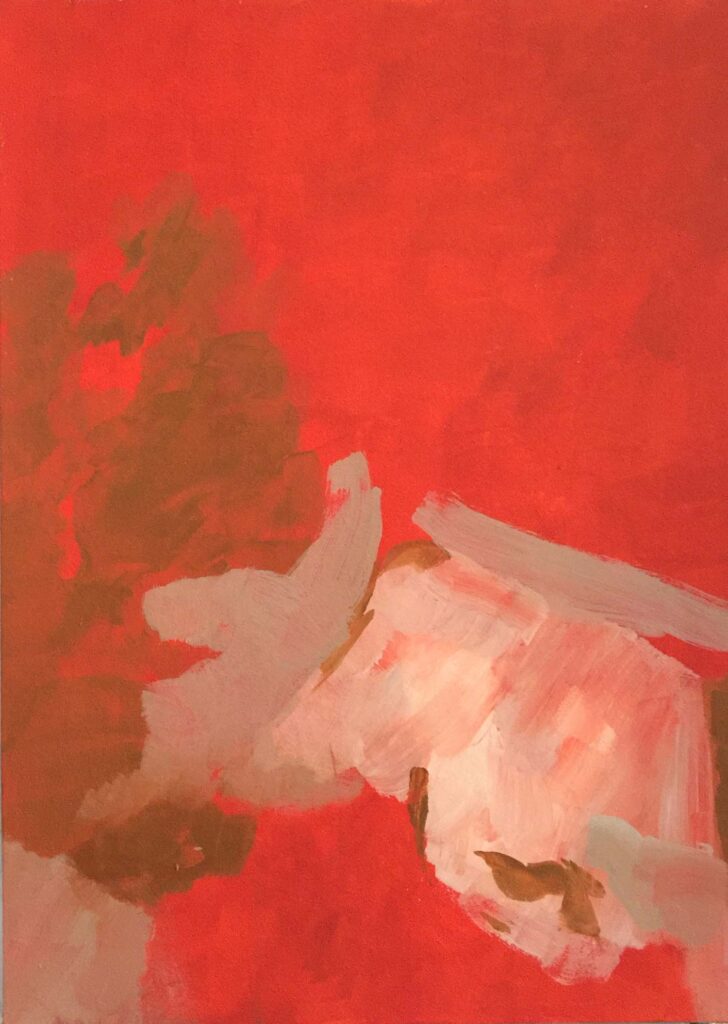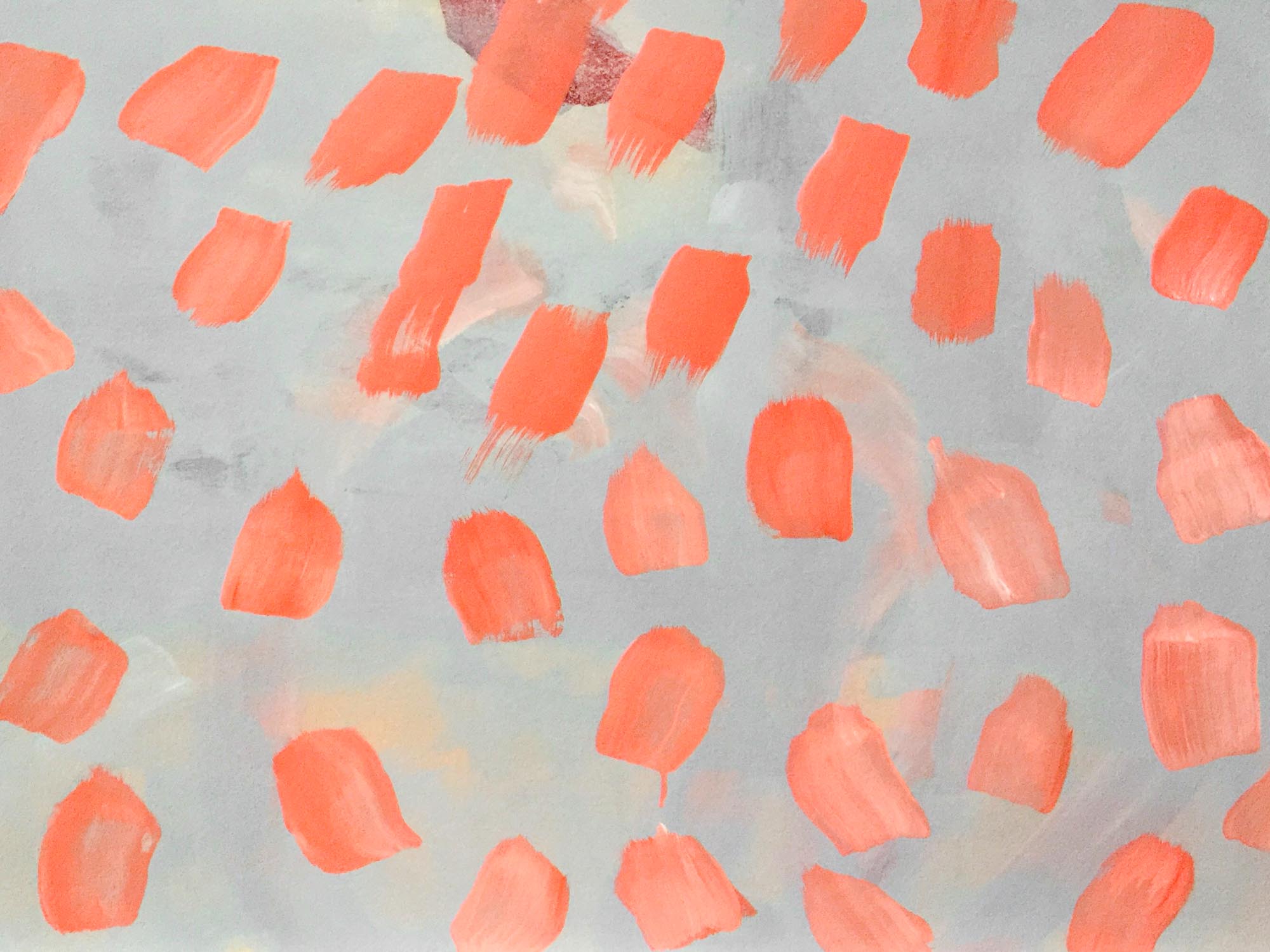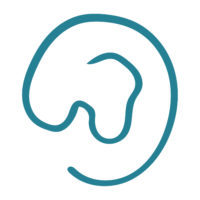Humanity is today crossing the threshold. This is a mysterious event, and it is connected also with the ‹Second Coming of Christ in the Etheric,› an event that began in the year 1933. This transformative event at the threshold will have a profound impact on coming centuries.1 Every attempt at serious inquiry in the present age needs to be framed in the light of this threshold event. A concern for language is one of the hallmarks of this threshold time and crossing. Human consciousness is searching for the hidden alphabet of the universe to establish a basis for future creative freedom and activity.
The gesture of development through the seven cultural epochs can be seen as a great arc that begins with a gradual descent into the earthly sphere of life. It consolidates during an earthly phase of development and then swings upward again following an inversion in the heart of the earthly phase. If we look at this great arc, we can see two critical moments, two thresholds or crossings: one occurs close to the beginning of the Third Cultural Epoch, the Egyptian-Mesopotamian (3101 B.C.) at a time when humanity takes leave of old spiritual consciousness and begins to establish a home on earth. The other critical moment occurs on the upward moving side of the arc very close to the beginning of the 20th century (1899 AD) in which humanity again begins to cross the threshold – although his time in the opposite direction – in order that humanity may open itself to the spirit by means of a matured experience of ‹I.› The seed-impulse planted in the heart of earth at the moment of the Christ’s crucifixion and resurrection – this seed-impulse that is then gradually matured through the Fourth Cultural Epoch and during the first centuries of the Fifth Cultural Epoch – this seed-impulse is then lifted into consciousness as a consequence of crossing the threshold, and it can now become active in outer life.
Babel
An image arises from humanity’s distant past. From the standpoint of language, this image depicts the moment of threshold-crossing from spirit realms into earth. I refer to the story of the Tower of Babel. There it is written that «All people had the same language . . .» Here, in fact, we find a description of the condition of humanity prior to the time of threshold-crossing. In those distant times people said to themselves, «Up! Let us build ourselves a tower straight up to the top up to the sky . . . for then we will not scatter all over the earth!» At this turning point of time, people lived with a sense of loss. They wanted to turn upward to recover a feeling of unity that was in danger of being lost. But God confuses their language. This confusion occurs during the Third Cultural Epoch in order that human consciousness may find independence on earth. For that reason, this attempt to return to the realm of spirit is actually a regression. The confusion of human language is a necessary step forward on the path to individuation.2 What is meant by a ‹common language?› Until a certain epoch in history, people understood each other directly out of inspirational experience.3 Things spoke their beingness to the inward soul of humankind. When humanity closed itself to the spirit, this ‹common language› was gradually lost. From this loss, there arose the ‹confusion of languages› – languages that find their basis in structures of linguistic convention. Instead of an of language experience, language becomes an experience of intellect and patterns of usage. Language gradually loses immediacy, and in its place we find a system of structured relationship between ‹signifier› and ‹signified.›

The Logos as Word
It is within this great arc of development at the asymmetrical center-point between the two threshold transitions that the incarnation of the great solar-being Christ takes place. What hitherto was active on the circumference now comes to birth at the midpoint center of crossing: «die and become.» John’s Gospel names this solar-being the ‹Word› (Logos). The ‹Word› is at once God speaking and God’s spoken word. It lies like a seed under the threshold of consciousness and slowly begins to grow during the ensuing centuries so that in the present age, through the crossing of the threshold of our time, it can fully penetrate for the first time into human consciousness. From a broad perspective it can be said: the original, creative-gestural language was lost, to be born again as word.
Fifty days after the resurrection, the disciples gather «of one heart» for Pentecost. The Acts of the Apostles describes how the Holy Spirit descended upon the disciples in the form of tongues of fire. Pentecost becomes a celebration of an awakening awareness of the birth of the Logos. What had been placed as seed-word fifty days earlier as cosmic-human event, now becomes individualized and active on the human level. The disciples begin to speak different languages. Through the descent of the tongues of fire, the universal language is reborn in them. From that moment, the disciples become apostles and set out to fulfill their mission in the world. The birth of the new spirit in our present age, the Fifth Cultural Epoch, can be seen as an awakening to consciousness of that which was sown as seed in the Fourth Epoch, just as Pentecost (Pentekoste in Greek, meaning: ‹fiftieth day›) is an awakening of what was sown as seed at the Resurrection. In this sense, we find an inner relationship between the event of Pentecost and the present-age event of threshold-crossing. In a sense, Pentecost is also an inversion of the narrative of the building of the tower. In the latter, a unified language falls into confusion of numerous languages. In the former, on the other hand, the seed is planted for a universal unified language that is born from the awakening center of every human being. In this sense, Pentecost is also the feast of new community, a feast based on the encounter of the individual human being with the universal. The penetration into the center of one’s individual being leads to the circumference of Being, where different languages prove to be aspects of one primordial language.
Threshold Transition and Questions of Language
In observing language – or even more precisely, in observing language as speech – we can clearly identify three levels. On the one hand, we have the substantive level, in which language functions as a medium of information exchange. On the other hand, we have the opposite: language as creative potential, wherein if one speaks a word, such speaking produces a sonic gesture in space. This pole of creative potential is almost lost in our world today. These two levels of language are in opposite relationship to one another: one level is related to the sphere of consciousness, the other level to the sphere of will. In between, in the sphere of the middle level, there moves the sound-process of speaking.
As we approach the moment of threshold crossing, the language question intensifies, and we find this intensification manifested in different cultural spheres, as for example in three main areas that have shaped the life of human consciousness and culture over the last century. We find the first the development of the binary language of the computer. We find the second in the study of the human genome, in the decoding of the DNA structure. And we find the third in nuclear fission. These are three central areas of concern, and all of them find their historical moment in the middle third of the last century, the moment that is decisive for threshold-crossing experience of our present age, according to Rudolf Steiner.

The phenomenological study of culture begins as inquiry concerning cultural events that appear on the stage of history and it then asks the question: «What is the new spiritual step forward of which those phenomena are earthly shadows?» In other words, the external cultural event is the earthly aspect of a more profound event that finds itself related to the event of cultural change and to the birth of new capabilities – or more precisely stated: to the call for the birth of new capabilities. So, what is behind the three important developments we have described previously? The development of binary language, which is the basis for the development of all computer science, leads to the creation of a language based on only two letters, two characters. In principle, two characters can be used to represent an infinite number of meanings. This is a great breakthrough, especially in the field of language. But expressed in a different manner with an inner spiritual vocabulary, is it not so that behind this outer development we find a search for a language that can think the foundations of Being? In his lectures for teachers, Steiner talks about the ‹straight line› and the ‹crooked line.› In the binary language we can recognize the same principle expressed as an abstraction: 0 and 1. Is it not the case that behind this binary abstraction there lies something else, namely the inner search for the original alphabet?
In the Revelation of John, the Logos speaks of itself: «I am the Alpha and the Omega.» The ‹I Am› has revelation as Alphabet of the universe. In terms of essence and quality, the ‹Alpha and Omega› is related to two basic gestures of being: a radiating movement of an opening character from the center to the circumference, and a condensing movement with the character of in-gathering from the circumference to the center. (The straight and the crooked are in this sense traces of the outer-radiating and inner- condensing activity.) Sonically, they are the vowels A and O.4
The Alphabet of Being
The great threshold-crossing breakthrough at the level of thinking is the possibility to understand the original Alphabet of Being as two fundamental and opposite-complementary qualities of being. Its earthly shadow aspect is binary language. By means of creative phenomenology, we can inwardly apprehend Being as pulsation of two basic binary states: the straight and the crooked, the A and the O. Of course, the difference between the language of Being and that language’s binary shadow is striking. Binary language is based on two letters or on numbers, 0 and 1; that is to say, it is based on a quantitative relation without an essential quality and center. This is the dead shadow figure of a new form of thinking that wants to awaken within humanity; it relies on movement between two qualities of being. The center that lives between these two basic gestures reveals its essential nature as the Being of transformation.5 From here we arrive at the decisive point: the binary language can represent infinite possibilities, but it cannot comprehend the Infinite in itself. Because it considers the Infinite from the standpoint of unending numeration, progress in the field of artificial intelligence must stop short at the portal of infinity, for the truly Infinite is dimensionless Being that cannot find representation; it is the intuitive moment in which center and circumference become one for a fleeting instant.
The Alphabet of Life
Descending one step further into the middle sphere, which also occurs as the sphere of life, we see at the beginning of the 1950s an intense preoccupation of science with the question of the most fundamental structure of the cell, that which contains all the genetic information. Research in the field of genetics is not simply another biological discovery. This rather concerns itself with the question of discovering a code with which one can understand all the other aspects. This question more acutely orients itself toward the discovery of the primordial biological language: in other words, the alphabet of life. In this context, we should not only pay attention to the research results, but to a question that arises at a certain point in the development. Our view is directed now to the middle sphere or life sphere. This act of directing our attention in this direction indicates something new nonetheless: namely, an understanding of life processes as metamorphic relationships. Here we can see a threshold-crossing into the sphere of life, at a time when humanity can rise consciously towards the central event of our time, namely the appearance of Christ in the sphere of life. The decoding of the genetic code is in this respect the earthly shadow of that inner spiritual event.

The Alphabet of the Creative Human Being
With this we arrive at the third level, which relates to creative speaking, whose finite aspect is the physical body and material substance. In the 1930’s of the 20th Century, intensive attempts were underway to cross and open the ‹smallest› – namely, to split the atomic nucleus. Wherever we find creative power chained, we also find an immense potential for destruction if that creative power should be released. This is the ‹genii› in the bottle. «The task of man now,» writes Georg Goelzer, «is to release again the creative fire of the spirit from a state of solidification . . . but in a different sense than through the uncreative shadow effects of nuclear power.»6 The human being is summoned to a task of transformation in regard to matter. By virtue of the crossing of the center-essence of matter, that which has solidified and has fallen into a deathlike state is summoned to creative renewal. This is the most profound working of the creative artistic fire. The creative crossing of the center point of matter necessitates a transformative crossing of the center point of individual being. In the future, the creative activity of language will inspire the human being to give birth to the human body from the word.7 This new birthing from the word shall be the birth of the human being itself. This great art of the future will find a basis in the harmonization of the sphere of will, the sphere of destiny.
Behind those three technical-cultural phenomena, which entail far-reaching consequences for the development of culture of the present age, we can hear the call for the birth of a new language activity – an activity that reveals itself in the pulsing movements of the world-human-being between Alpha and Omega. Even «more glorious than gold and . . . more refreshing than light,» says Goethe in his Fairy Tale, is «conversation.» And the space of conversation will gradually reveal itself as a creative space of healing and transformation. In this sense, the new Pentecostal Community will be a world-creating conversation community.
Translation Bruce Donehower
Vita of the artist
Sibylle Wissmeyer, born in 1953 in Rheingau, studied painting at the Academy of Fine Arts in Munich, political science and literature at the lmu-Munich and eurythmy in Dornach and Oslo. She lives and works near Munich and on Corsica.
Footnotes
- Rudolf Steiner, Preliminary Steps to the Mystery of Golgotha. Lecture of 6.3.1910, GA 152, Rudolf Steiner Verlag, Dornach 1990, p. 46.
- Emil Bock, Urgeschichte. Urachhaus, Stuttgart 1978, p. 106.8
- Rudolf Steiner, From the Akashic Chronicle. Rudolf Steiner Verlag, Dornach 1983, p. 26.
- Georg Goelzer, Alpha and Omega. Urachhaus, Stuttgart 1997, p. 60.
- Ibid. S. 20
- Mara Friederich und Georg Goelzer, Falter und Blüte, Der Grüne Vogel. Dornach 1994,p. 275.
- Rudolf Steiner, The Theosophy of the Rosicrucian. Vortrag vom 5.6.1907, GA 99, Rudolf Steiner Verlag, Dornach 1985, p. 147.













